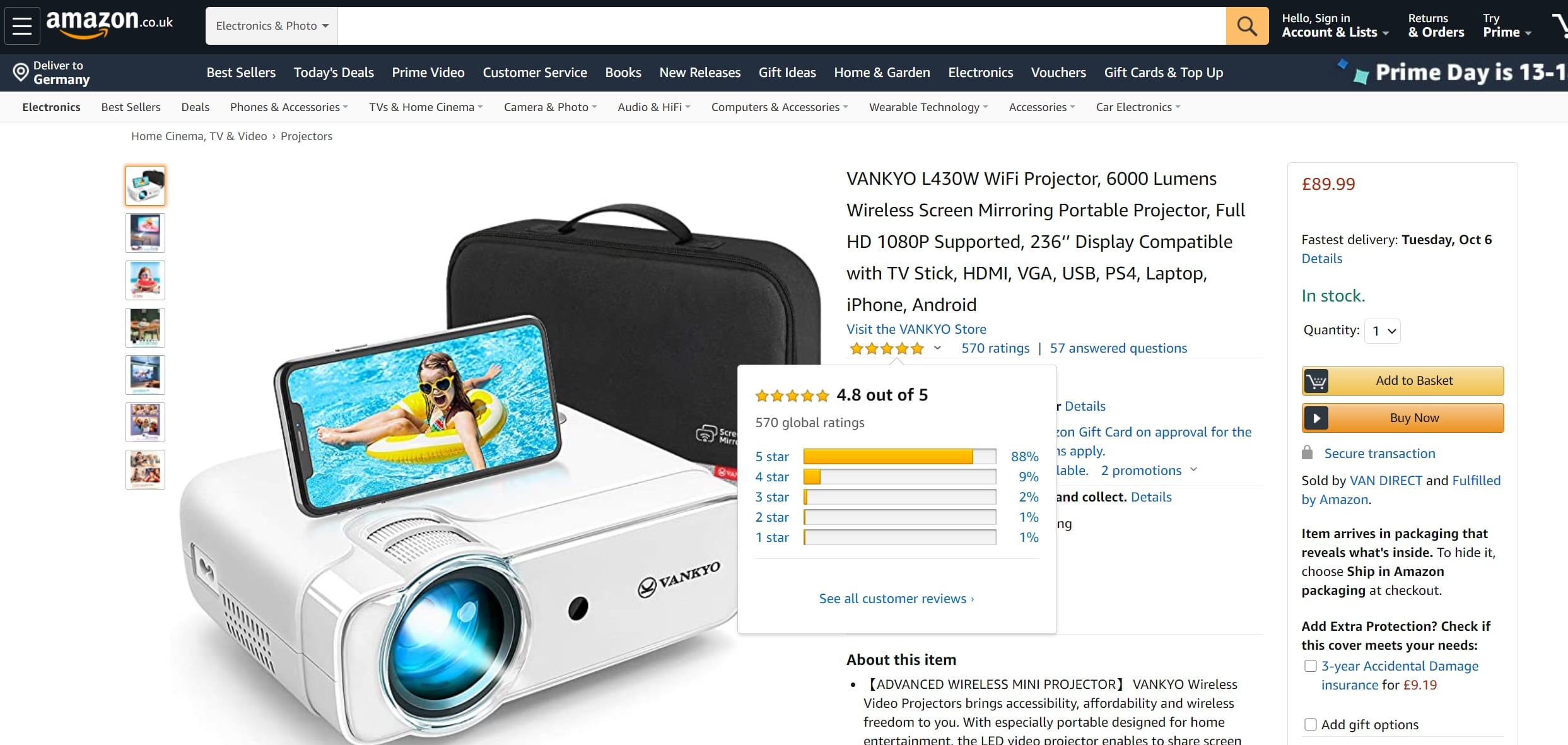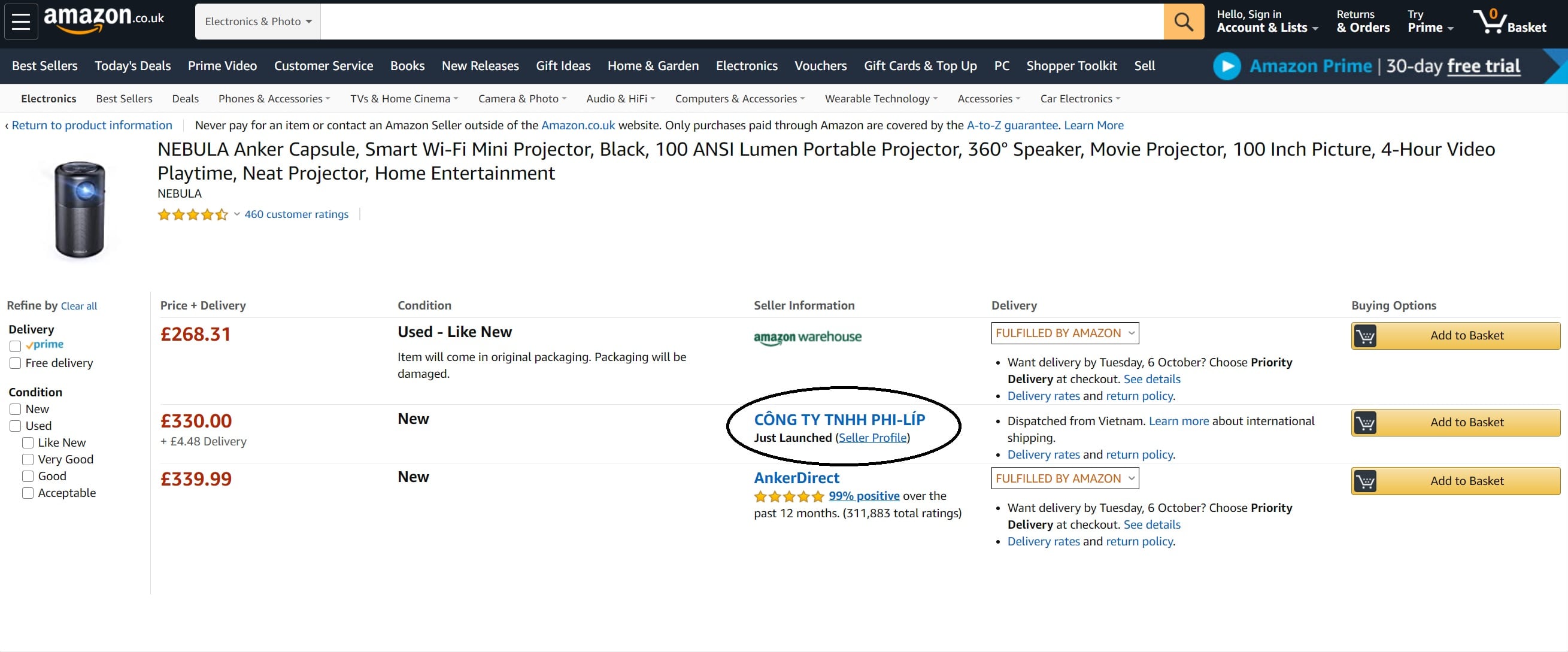Amazon Fake Reviews: How to Spot Seller Manipulation Tactics
Amazon sellers sometimes use manipulation tactics to boost their product rankings through fake reviews and artificial ratings. Understanding these tactics helps protect your business and customers. This guide reveals common manipulation methods and how to spot them.
For legitimate ways to monitor your Amazon presence, explore our review monitoring tools.
How to Identify Artificial Amazon Star Ratings
Reviews play an important role when it comes to the sale of products. As a rule, the more reviews, the higher the number of sales. Chinese sellers, in particular, are happy to help in this regard to give a product more credibility.
A look at the new releases of Amazon is often enough to find products that sellers have assisted with reviews. New products usually have only a few reviews; therefore, products with many reviews are easily spotted.

The shown competitors on positions 5 and 7 immediately catch your eye. Almost 600-star ratings for a new product? Kudos! Let’s take a closer look at the product in 5th place.

According to the product detail page, this product has been available since September 20. Two weeks later, this product already has 570 reviews? Hardly. When you look at the ratio of reviews with text to the ratio of ratings overall, you can see that.
If you look at the course of the reviews, you can see that the first reviews are all unverified, consistently positive, and the customer gave all in a short time.

Looking at the profiles of the people who praise the product, you will find the Profile of Chris, who has written almost 100 reviews in the last six months. All with five stars. Chris is probably lucky since every “purchase” seems to be a hit. And Chris is diligent. Every 2-3 days, he publishes a review. Chris must have much money.
Or did Chris not buy the products at all? Does Chris get the products as a gift or even money for his reviews? We don’t know, but it looks strange, and these black-hat tactics are not unusual. A quick look at a few Facebook groups is enough, and you will be overwhelmed with such offers.
Artificial generation of variants
To provide many reviews quickly, sellers often create many variants in a short time to provide the first star or unverified ratings for each variant. Finally, the variants also share the ratings.
In most cases, there are only a few differences. And a “product tester” could give not just one but also ten reviews—some prankster with evil thoughts on his mind.
Detecting False Product Images on Amazon
If the images shown are very similar, you should look at the reviews too. But if you look at the reviews, it seems that something else is delivered. Here are a few examples from reviews of fake iPhone headphones:
- “contrary to the Images, a headphone (i7s mini) is delivered with buttons and not with touch function.”
- “delivered were two small boxes with cheap versions that had nothing to do with the pictures and the description.”
- “Product not as shown in the image. Cheap material, poor quality.”
- “Flashes like a police car, is twice the size of AirPods, and the quality of the sound is poor.”
- “Unfortunately, you get a different product from what the pictures are showing.”
It is precisely the use of Apple’s Airpods as an image that makes potential buyers want to buy. This kind of Apple product for only 25 EUR? This makes the heart of every bargain hunter beat faster. The disappointment kicks in when unpacking.
The same thing happened with the iPhone cable in the following picture. Numerous customers complain that the cable does not fit at all.

How Sellers Hijack Old Amazon ASINs
Chinese sellers also like to attach themselves to old, discarded ASINs, e.g., a further variant of a product family that is no longer used. The practical thing: The reviews are inherited directly. This can often be seen in the reviews that refer to completely different products. But you have to look closely to see this. At first glance, everything looks ok, especially when the first reviews of the new product are received.
Understanding Fake Order Manipulation on Amazon
Sometimes Chinese sellers place huge fake orders to block a seller’s stock temporarily. The sellers then place an offer themselves, and in this way, they reach the buybox.

In the example above, an FBM item costing around 20 EUR was placed in the shopping cart many hundreds of times, and the order was then canceled. A short time later, various Chinese sellers were found on this listing.

Coincidence?
How Competitors Use Negative Reviews to Attack Listings
Another criminal method is to generate artificially negative ratings for a product. This often works like this: A seller attaches himself to an existing listing with a preferably higher price rating to be “weakened.” Now he hires buyers who purchase the product specifically from him so that the revenue from the purchase benefits him and no one else. The product is usually not shipped. However, the buyers are refunded the money behind the scenes and receive the task to leave negative ratings. These can be reviews but also simple star ratings. The latter is even more difficult for the brand owner to question. On the other hand, negative fake reviews can often be recognized as such.
The smaller the number of existing reviews, the fewer negative reviews are needed to lower a rating below 4-stars.
The following table shows how many 1-star ratings are necessary to push a listing from 4.4 to 3.5. Especially for products with less than 100 ratings, comparatively few negative ratings are sufficient.
Reading example: If a listing has 40 ratings with an average of 4.4, only 15 1-star ratings are needed to lower the average to 3.5.
| Number of certain ratings | Necessary negative ratings |
|---|---|
| 1 | 1 |
| 5 | 2 |
| 10 | 4 |
| 20 | 8 |
| 40 | 15 |
| 80 | 29 |
| 160 | 58 |
| 320 | 116 |
The consequences are obvious: the product is bought less frequently, thus decreasing its visibility, making it even less likely to be purchased, and the downward spiral takes its course. Products can therefore be “shot down” in a targeted manner.
Manipulating Amazon’s “Helpful” Review Votes
A seller once reported about this case: a several years old negative evaluation of a product suddenly received many “helpful” or “useful” votes “overnight.” As a result, this rating suddenly appeared among the top reviews, displayed at the end of the listing and often read first by potential buyers.
The following example shows a review that has been translated into English from another language. It is unlikely to be helpful for most customers, it received nine votes in a short time.

Protecting Your Amazon Business from Review Manipulation
There are several other methods. And not all Chinese sellers are cheaters. Some German sellers deliberately violate the guidelines as well. One thing remains to be noted: None of this is sustainable. Amazon usually deletes products that so obviously violate Amazon’s policies. However, this can take a while, and a few weeks are often enough for the sellers to make the campaign profitable. Even if the sellers are fully terminated, they usually have additional accounts, and the “game” starts all over again.
Do you know any other tricks? Send us a mail at info@amalytix.com. Confidentiality is, of course guaranteed.
Subscribe to Newsletter
Get the latest Amazon tips and updates delivered to your inbox.
Wir respektieren Ihre Privatsphäre. Jederzeit abbestellbar.
Related Articles
Amazon Reviews vs Star Ratings: Data Analysis Reveals Key Differences
Discover why Amazon star ratings are more positive than written reviews. Data analysis of 35,000 products reveals surprising customer behavior patterns.

Trutz Fries
Monitor Amazon Top Reviews: Complete Guide for Sellers
Amazon top reviews guide: Learn why monitoring helpful ratings matters, how to track review changes, and set up alerts for better reputation management.

Trutz Fries